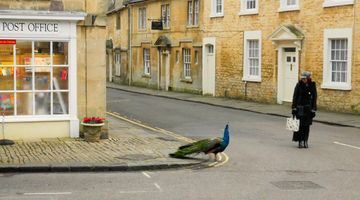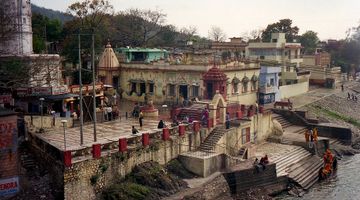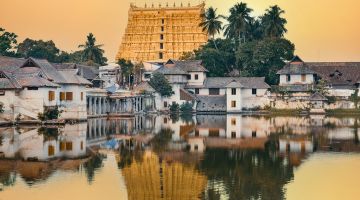Kolkata Tourist Attractions
Known as the ‘City of Joy’, Kolkata is famous for its deep rooted traditions and a rich cultural heritage that gets reflected in every walk of life.
One of the first British colonies in the country, Kolkata is known for its contribution in various fields like music and literary works. The city boasts a unique confluence of Indian and British cultures and this is evident in the endless number of monuments and historic buildings. However, Kolkata has undergone a lot of changes in the last decade or so as it strives to modernize itself to match the growing demand of consumerism and to meet the expectations of the ever growing number of tourists. The city of Kolkata is now one of the top tourist destinations in India and we visited some of the popular sights to understand why Kolkata stands apart from the rest of the country.
Colonial Era Heritage
We started our tour with the St Paul’s Cathedral (free admission, 10 am to 6 pm, daily) which is a great example of an Indo-Gothic style of architecture. The celebrated Christian shrine was built between 1839 and 1847 and is known to be the 1st Episcopal Church of Orient. It is surprising to note that although the main building was destroyed twice by natural calamities, it was again re-built in 1934 and was modelled after Canterbury Cathedral.
Opened to the general public in 1921, the Victoria Memorial (INR 200 per adult/foreigners, 10 am to 5 pm, Monday closed) was designed by the famous architect William Emerson. It is estimated that the structure was constructed at a whopping cost of INR10.5 mio which was definitely a lot of money in those days. Once inside the memorial we came across beautiful paintings of the Royal British family, historical artifacts and various documents of profound historical significance. Today the travel guides regard Victoria Memorial as the most easily recognizable tourist attraction in Kolkata.
Kolkata Temples
India is known for its temples and religious structures and it is no surprise that Kolkata also has a few temples that deserve a special mentioning. Birla Mandir (also known as Lakshmi Narayan temple), for example, is known across the country for its awesome architecture and the neat surroundings. The Birla Mandir has an imposing height of 160ft above the ground level and it took 26 years to complete the construction! The whole temple complex was built of white marble which gives it a shiny white look and covers the area of 45 katha (approximately). It is open daily from 5.20 am to 11 am, admission is free.
The Dakshineshwar Kali Temple (6 am to 9 pm, free admission, daily) is dedicated to Goddess Kali and receives a mammoth number of devotees throughout the year. Founded by Rani Rashmoni, the temple complex is spread over 25 acres of land. Beside the main temple complex there is a green park surrounding it. Inside the temple Bhavatarini, a form of Goddess Kali, is actually worshipped and it is widely believed that this goddess takes away all the pains and sorrows of her devotees.
Marble Palace
However, Kolkata is not only about temples and churches. Located in one of the most congested parts of the city, the Marble Palace (10.30 am to 4.00 pm, free admission, closed on Monday) or the Palace of Art is a stunningly beautiful building that boasts colonial style architecture. During the British Rule in India it was the private property and nowadays the palace showcases magnificent art forms from different parts of the world like England & Netherlands. There are also idols of the different Hindu Gods, as well as statues of Virgin Mary and Christopher Columbus.
Indian Museum
Dr Wallich, a Danish botanist, was the man behind the construction of Indian Museum, (10 am to 5 am, free admission, closed on Monday) the oldest museum in the country and the 9th oldest museum in the world. It is widely considered the 2nd most visited attraction in Kolkata and is definitely worth your time. Inside the museum there are separate exhibits of mummies, ornaments, fossils and skeletons. The Indian Museum has more than 60 galleries and is divided into 6 main sections namely Anthropology, Archaeology, Art, Geology and Zoology. It is advisable to allot at least 3 hours for the museum tour so that each and every exhibit is covered.






















































